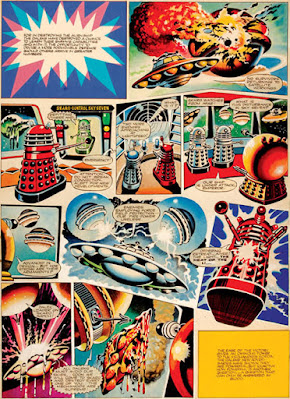I was delighted and honoured to be invited to appear at CRoM Con Europe, the convention for comics fans and SF/fantasy geeks. Many thanks to Pops Van Sant, our esteemed host, and Glenn B Fleming, UK comics powerhouse, for including me. I got to hold forth about Mirabilis for a bit, describe my visit to the Doctor Who studios back in the Hartnell era, and as an added bonus I got to meet the guys from the Earth Station One podcast. Their back catalogue of episodes will be the soundtrack to my country walks well into the spring.
At one point we got to talking about Wrath of the Gods, a fabulously scary '60s comic strip set in the mythic age of Greece. It was illustrated by the (also mythic) Ron Embleton, of course, not "Ron Pemberton" as I burbled during the podcast. (I'd been chatting about Inside Number 9 recently; that's the only excuse I've got.)
If you want to skip, I come in after about three and half hours, but listen to the whole thing (there's a part two as well) because there are so many fascinating people with stories to tell and wisdom to impart. Talking of which, here's the time Glenn met Jack "King" Kirby:
And if you've just joined us:

























